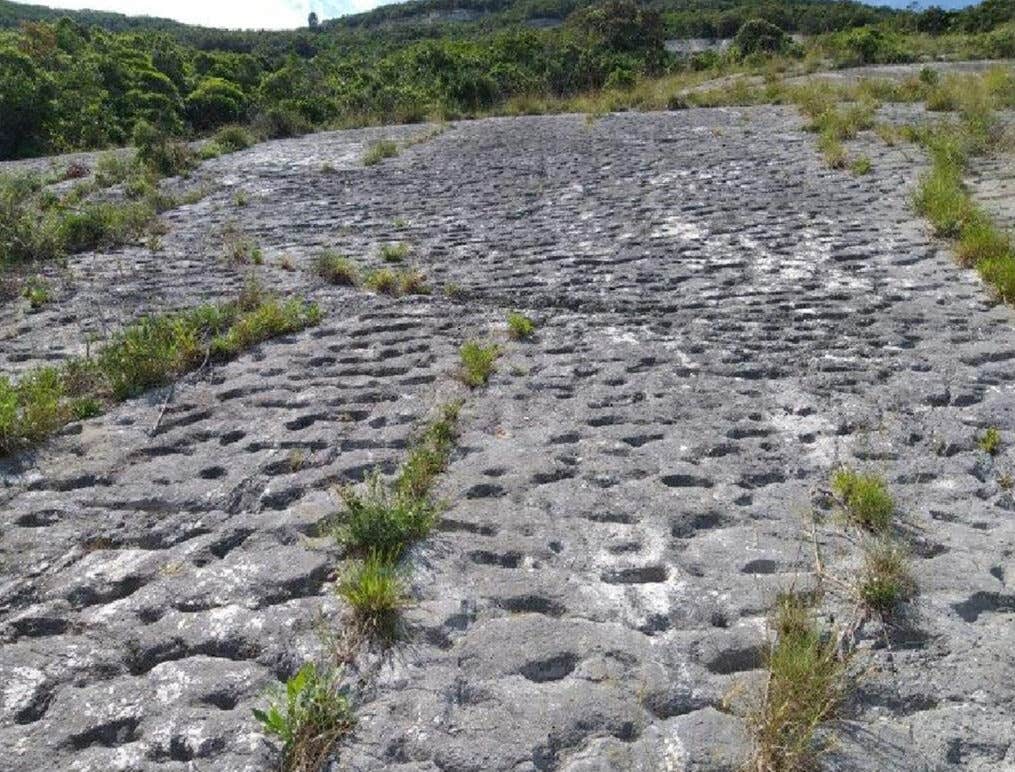Could reflecting sunlight back to space actually work and cool the planet?
New research reveals why stratospheric aerosol injection faces major technical, supply, and governance hurdles in cooling Earth.

New study warns that cooling Earth with stratospheric aerosols faces huge technical and political challenges that make it far from a quick fix. (CREDIT: AI-generated / The Brighter Side of News)
Scientists for years have argued over drastic action to cool a warming world. Among the most widely debated is stratospheric aerosol injection, or SAI— injecting reflective particles into the upper atmosphere over the entire planet to reflect sunlight back into space and counter global warming. Simple as it may seem, this so-called "quick fix" for global warming is much more complex and risky than it sounds.
How Stratospheric Aerosol Injection Works
The basic concept behind SAI has its roots in nature. When enormous volcanoes erupt, they spew sulfur dioxide into the upper atmosphere, where it condenses into tiny sulfate particles that reflect sunlight back toward the Earth and cool the planet for a short time. Scientists have long wondered if humans could mimic that natural process to slow warming.
But while the plan in theory sounds great, it also opens a Pandora's box of technical, chemical, and geopolitical issues. The study, which was done by Columbia University atmospheric chemist V. Faye McNeill and colleagues, does some reality checking on what actually would be required to implement SAI—and the results are underwhelming.
"Even if SAI simulations in climate models are sophisticated, they're necessarily idealized," McNeill said. "Scientists model ideal particles in ideal situations. When you start to consider where we are in the real world compared to that ideal, it introduces a lot of uncertainty."
Engineering and Material Challenges
In order to reflect sufficient sunlight, the particles injected into the stratosphere must be very small—smaller than a micron in diameter—and spread all over the stratosphere evenly. But it is a gigantic undertaking to manufacture and distribute vast amounts of such perfectly sized particles.
Researchers have been trying out several alternatives for sulfate, from calcium carbonate to alumina, titania, zirconia, and even diamond dust. The optical advantages some of these minerals possess are that they can scatter sunlight more efficiently or interact less with ozone. But the research reveals that the expected benefits vanish when faced with reality.
Lead author Miranda Hack, an aerosol scientist at Columbia University, says that instead of dissolving individually, these particles would prefer to clump together. As they clump, they become non-reflective and fall out of the stratosphere more rapidly. "Instead of having these optimal optical properties, you have something much worse," Hack said. "Compared to sulfate, I don't think we'd necessarily realize the benefits that have been discussed."
Producing these materials in the amounts required also poses major manufacturing and logistical issues. Sub-micron particles must be manufactured in enormous quantities, stored properly, and dispersed at altitudes above 20 kilometers. That would involve the development of high-pressure nozzles, carrier gases, and specialized aircraft—technologies as yet unknown on the requisite scale.
According to the team, the ratio of carrier gas to mass of solid material can be up to 35 to 1, which would be a significant increase in cost and decrease in efficiency.
The Supply Chain Problem
Even if the technical issues were resolved by engineers, material availability would remain a constraint to SAI feasibility. One or more suggested materials, e.g., zirconia or diamond, are too rare or too costly to be manufactured in significant quantities. Others, e.g., alumina or calcium carbonate, are more readily available but still need energy-intensive processing.
Economic modeling by Columbia teams shows global supply chains would easily be stretched by the demand. Zirconia, for example, has a price elasticity of –0.44, meaning prices will rise sharply when demand increases. Titanium dioxide has a –0.29 elasticity, suggesting only moderately more flexibility. Even quite common minerals would be bottlenecks if SAI were used at world scale.
That's one of the most important lessons from the study. The logistics of production, distribution, and dissemination of sufficient material could make mass SAI impractical or too costly.
A Matter of Latitude and Politics
Aside from engineering, SAI poses daunting governance challenges. How and where the particles are injected is as critical as what they are composed of. Aerosols injected above the tropics, for example, might be more evenly spread and long-lived, but polar or mid-latitudes injection might have unanticipated effects on weather patterns.
"It's not a matter of just dumping five teragrams of sulfur into the air. Where and when you do it matters," McNeill said. Dumping aerosols into the wrong place in the atmosphere could potentially change monsoons, move jet streams, and trigger regional flooding or droughts.
That's why coordination is necessary—and unlikely. An internationally managed program would be able to tailor injection timing, altitude, and geography to minimize side effects. But a single country, or even a single firm, acting alone would be able to upset the climate system. As Columbia climate economist Gernot Wagner put it, "It isn't going to happen the way that 99 percent of these papers model."
Comparing Sulfates and Solid Aerosols
Short term, the best studied and most plausible choice is sulfate aerosols. They are easier to produce and their climatic effect is well understood. That was observed after the 1991 Mount Pinatubo eruption, which chilled the world by a degree or two for several years. But sulfates have serious trade-offs: they may warm the stratosphere, oxidize the ozone layer, and increase acid rain.
Solid mineral aerosols can scatter more light and be less reactive chemically. In practice, however, their advantage depends on keeping particles from clumping together—something that is essentially impossible at scale. The instant clumping begins, cooling efficiency decreases, stratospheric warming sets in, and the supposed advantages are gone.
Given all these, the scientists find that sulfate aerosols are technically the only option presently available, though even these involve risk.
The Big Picture: No Silver Bullet
Ultimately, the report is a dose of reality. SAI can be done, but it won't be easy, inexpensive, or sure to succeed. With each step from production and shipping to coordination and monitoring comes uncertainty and risk.
McNeill and her co-authors are firm that solar geoengineering should never be used as a substitute for emissions reductions. Instead, it could perhaps be a final-resort, short-term solution—one that would need openness, global consensus, and stringent regulation.
"Geoengineering is not magic bullets," Wagner said. "It's making trade-offs in an interconnected, complex system."
Practical Implications of the Research
This study highlights the importance of caution in evaluating geoengineering. It is how great the disparity can be between computer models and real-time implementation.
The policymakers, engineers, and scientists will need to collaborate to evaluate not only the technical viability but also the ethical and geopolitical risks.
For the layperson, it is a reminder that the answer to global warming lies in cutting back on emissions at their source—not holding out hope for untested atmospheric geoengineering solutions to bail us out.
Research findings are available online in the journal Scientific Reports.
Related Stories
- Seeding the sky with diamonds could cool the Earth, study finds
- Researchers look at blocking the sun to control global warming
- Breakthrough sunlight-powered system captures carbon just like plants
Like these kind of feel good stories? Get The Brighter Side of News' newsletter.
Joseph Shavit
Science News Writer, Editor-At-Large and Publisher
Joseph Shavit, based in Los Angeles, is a seasoned science journalist, editor and co-founder of The Brighter Side of News, where he transforms complex discoveries into clear, engaging stories for general readers. With experience at major media groups like Times Mirror and Tribune, he writes with both authority and curiosity. His work spans astronomy, physics, quantum mechanics, climate change, artificial intelligence, health, and medicine. Known for linking breakthroughs to real-world markets, he highlights how research transitions into products and industries that shape daily life.



